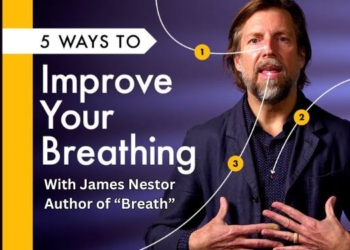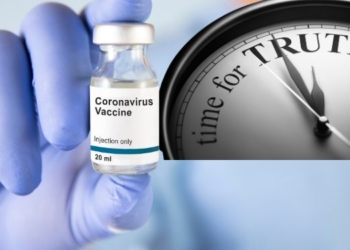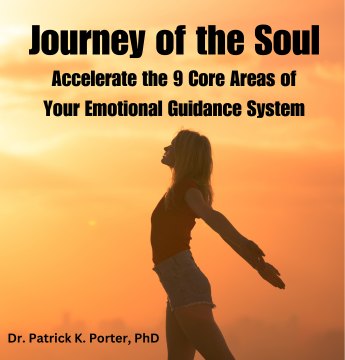Video Source: FoundMyFitness
By Dr. Joseph Mercola | mercola.com
STORY AT-A-GLANCE
- Research suggests an exercise is a powerful tool for the prevention and management of depression, in part by normalizing insulin resistance
- Mechanistic studies have also linked the antidepressant effects of exercise to molecular mechanisms involving kynurenine, myokines, BDNF, the endocannabinoid system, and beta-endorphin
- By allowing for more tryptophan to be transported into your brain, exercise raises your serotonin and inhibits conversion into kynurenine, thereby boosting mood and preventing depression
- Low BDNF levels have been implicated as a central component of depression, as depressed patients typically have lower levels than healthy controls
- While exercise euphoria is typically attributed to the release of endorphins, vigorous exercise also dramatically increases anandamide — an endocannabinoid — in the body, which influences opioid and endorphin receptors. The higher your anandamide level, the better you feel
In this short video, Rhonda Patrick, Ph.D., a biomedical scientist, and researcher with the Salk Institute for Biological Sciences in La Jolla, California, discusses the science behind the mood-lifting effects of exercise.1 Indeed, many experts agree that exercise is one of the most powerful tools available for the prevention and management of depression.
For example, a meta-analysis2 published in 2016, which looked at 23 randomized controlled trials in which exercise was used as treatment for unipolar depression, found that, compared to no intervention, exercise “yielded a large and significant effect size,” which led them to conclude, “Physical exercise is an effective intervention for depression.”
How exercise ameliorates depression
One of the ways exercise promotes mental health is by normalizing insulin resistance. Mechanistic studies, several of which are highlighted in Patrick’s video, have also linked the antidepressant effects of exercise to molecular mechanisms involving:
- Kynurenine, a neurotoxic stress chemical produced from the amino acid tryptophan
- Myokines
- Brain-derived neurotrophic factor (BDNF), a growth factor that regulates neuroplasticity and new growth of neurons
- The endocannabinoid system
- Beta-endorphin, an endogenous opioid neuropeptide, and peptide hormone
Exercise boosts the metabolism of kynurenine
As explained by Patrick, tryptophan is an essential amino acid required for the synthesis of serotonin, melatonin, vitamin B3 and kynurenine. While kynurenine is associated with stress and depression at higher levels, higher levels of serotonin are associated with improved mood.
To a degree, exercise will allow you to control what the tryptophan will be synthesized into. By allowing for more tryptophan to be transported into your brain, exercise raises your serotonin and inhibits conversion into kynurenine, thereby boosting mood and preventing depression.
Conversely, chronic stress and low-grade inflammation make more tryptophan available for conversion into kynurenine and less into serotonin, which has a depressive effect.
Kynurenine, in turn, is a precursor to a neurotoxic compound called quinolinic acid, as well as a neuroprotective compound called kynurenic acid. Here too, exercise — and especially endurance exercise — activates a gene that prevents kynurenine from forming quinolinic acid, and makes it form kynurenic acid instead.
Animal research3 has also shown that well-trained muscles have higher levels of an enzyme that helps metabolize kynurenine, thereby ridding the body of it. As noted by the authors:4
“Our initial research hypothesis was that trained muscle would produce a substance with beneficial effects on the brain. We actually found the opposite: well-trained muscle produces an enzyme that purges the body of harmful substances. So in this context, the muscle’s function is reminiscent of that of the kidney or the liver.”
Endurance training promotes anti-inflammatory myokines
Myokines are a type of a chemical messenger in a class called cytokines. Many of the cytokines we already know about are the kind liberated from adipose tissue, your body fat, particularly the truncal fat mass that gives you that apple-shape.
Many of these are inflammatory cytokines, such as tumor necrosis factor-alpha (TNF-alpha) and interleukin-1 family (IL-1), which are involved in a variety of disease states, including cancer. Interestingly, the cytokines produced by muscle tissue, which are known as myokines (“myo” being the Latin root for muscles), have anti-inflammatory effects.
Myokines also increase your insulin sensitivity by improving glucose utilization inside your muscles and, acting as chemical messengers, myokines help inhibit the release of inflammatory cytokines produced by body fat.
Transient inflammation has beneficial effects
As explained by Patrick, microglia in your brain secretes neurotropic substances such as BDNF in response to exercise. Interestingly, it is inflammatory cytokines that are responsible for this beneficial effect.
So, while the chronic release of inflammatory cytokines can cause grave harm — and is associated with depression — the transient inflammation caused by vigorous exercise actually has a beneficial impact.
According to research cited by Patrick, low BDNF levels have been implicated as a central component of depression, as depressed patients typically have lower levels than healthy controls. As noted in a 2013 study5 on the interactions between exercise, depression and BDNF levels:
“[T]here is strong evidence that decreased BDNF is associated with … increased risk for depression, whereas increasing BDNF by aerobic exercise appears to … reduce depression.”
Exercise is known to enhance BDNF secretion, while chronic stress reduces it. In one study,6moderate and vigorous-intensity cycling raised BDNF levels by an average of 32% compared to baseline.
As you might expect, duration plays an important role in how much BDNF is produced. Moderate to vigorous intensity for 40 minutes produced a more significant increase than those exercising at the same intensity for just 20 minutes.
The endocannabinoid connection
Cannabinoid receptors in the human body were discovered in the 1990s, which in turn led to the realization that we make compounds in our body — endogenous cannabinoids — that influence these receptors.
It was also discovered that the endocannabinoid system (ECS) orchestrates communication between other bodily systems, such as your respiratory, digestive, immune and cardiovascular systems.
One of the cannabinoids your body produces is called anandamide — a nod to the word “Ananda,” the Sanskrit word for “bliss,” as it attaches to the same CB1 receptors that the psychoactive THC in cannabis attaches to.
While runner’s high is typically attributed to the release of endorphins, running also dramatically increases anandamide in the body, and anandamide not only targets the CB1 receptor, but it also influences opioid and endorphin receptors. Not surprisingly, then, the higher an individual’s anandamide level, the better they report feeling.
Research cited by Patrick shows people engaging in moderate-intensity running or cycling increase their anandamide levels, and that the greatest increase occurs when you’re exercising at 70% to 80% of your maximum heart rate.7
Exercise boosts feel-good hormones
Exercise also triggers the release of beta-endorphin, an endogenous (meaning it’s made by your body) opioid neuropeptide and peptide hormone produced in specific neurons located in your central and peripheral nervous systems. As noted in the 2008 paper,8 “The Runner’s High: Opiodergic Mechanisms in the Human Brain”:
“Reductions in opioid receptor availability were identified preferentially in prefrontal and limbic/paralimbic brain structures. The level of euphoria was significantly increased after running and was inversely correlated with opioid binding in prefrontal/orbitofrontal cortices, the anterior cingulate cortex, bilateral insula, parainsular cortex, and temporoparietal regions.
These findings support the ‘opioid theory’ of the runner's high and suggest region-specific effects in frontolimbic brain areas that are involved in the processing of affective states and mood.”
Other studies showing exercise can treat depression
As noted by Patrick, there’s a solid and ever-growing body of scientific evidence showing physical exercise is a major key in the successful treatment of depression. Aside from the mechanistic studies highlighted in her video, here’s a short-list of studies and scientific review articles that have investigated this oft-ignored prescription:
| JAMA Psychiatry 20189,10 (a study funded in part by the National Institute of Mental Health) concluded exercise “may have greater efficacy than current approaches that target depressed mood.”
Contrary to popular belief, they found that while physical activity affected the participants’ mood afterward, their mood did not affect the amount of physical activity they engaged in. This defies the common assumption that depression causes physical inactivity. In fact, the results suggest it’s largely the other way around. |
| Frontiers in Pharmacology 201711 addressed the question of whether a comparison between exercise and drug treatment is evidence-based, noting that:
“The literature on the benefits of exercise for depression is extensive. Nevertheless, two recent reviews focusing on antidepressants vs. other therapies as a basis for clinical practice guidelines recommended mainly antidepressants, excluding exercise as a viable choice for treatment of depression. The aim of this perspective is to analyze the literature exploring the reasons for this discrepancy … [I]t is possible that academics and health care practitioners are skeptical of viewing exercise as medicine. Maybe, there is a reluctance to accept that changes in lifestyle, as opposed to pharmacological treatment, can alter biological mechanisms.” In conclusion, they found three randomized controlled trials comparing four months of exercise to the use of antidepressants (two of which involved patients with major depression and one recruited those with minor depression). All of them found that exercise and antidepressant treatment were equally effective. Of 11 randomized controlled trials comparing exercise as an adjunctive treatment to antidepressants (combination comparisons) against a wide variety of controls, 10 of them found “a significant depressive improvement after the exercise period, and/or that the proportion of patients with a clinical response was larger for the exercise group than the control.” The paper reviews a variety of biological mechanisms by which exercise can benefit those with depression, including boosting BDNF and serotonin and lowering inflammation biomarkers. The authors also point out that: “Two meta-analyses examining the efficacy of exercise as a treatment for major depression concluded that exercise as a treatment for depression can be recommended as a stand-alone treatment or as an adjunct to antidepressant medication, and that exercise can be considered an evidence-based treatment for the management of depression … Almost all reviews examining exercise vs. other treatments of depression, including antidepressants, support the use of exercise in the treatment of depression, at least as an add-on therapy … Based on the present review, which examined most or all RCTs published in 1999–2016, and most or all meta-analyses/systematic reviews published in 2009–2016, it can be stated that exercise is an evidence-based medicine for depression — at least as an add-on to antidepressants.” |
| Current Opinion in Psychology 201512 highlighted the role of inflammation in depression, and how biological markers can help explain how exercise reduces depressive symptoms. As explained in this review:
“There is growing support for the efficacy of exercise interventions for the treatment of individuals who present with mild-to-moderate depression … The present article reviews contemporary theoretical accounts and recent empirical data pointing to neuroinflammatory states and neurotrophin production as possible biomarkers of the antidepressant response to exercise … Recent research suggests that depressed patients have elevated levels of pro-inflammatory cytokines, with the most reliably observed elevations in Interleukin-6 (IL-6) and Tumor Necrosis Factor-alpha (TNF-alpha) … Along with the elevated levels of pro-inflammatory cytokines among depressed individuals, several studies show lower than average levels of anti-inflammatory cytokines such as Interleukin-10 (IL-10) and a lack of correlation between IL-10 and IL-6 that typically is present, suggesting there is a dysregulation of the inflammatory system among depressed patients … Exercise has emerged as an effective strategy to target inflammatory deregulation … For example, acting as a stressor, acute bouts of exercise result in the release of the pro-inflammatory cytokine IL-6 from muscles. This release of IL-6, in turn, activates the synthesis of anti-inflammatory cytokines such as IL-10 and inhibits the release of pro-inflammatory cytokines such as TNF-alpha, suggesting that exercise promotes, in this way, an anti-inflammatory environment. Similarly, when occurring chronically, exercise (training) reduces the production of pro-inflammatory cytokines such as IL-6 and TNF-alpha and increases the production of the anti-inflammatory cytokine IL-10.” Many other studies support the view that depression is mediated, and perhaps directly caused,13by inflammation, especially gastrointestinal inflammation.14 Cytokines15 in your blood, and/or inflammatory messengers such as CRP, interleukin-1, interleukin-6, and TNF-alpha are all predictive of16 and correlate17 to depression. In melancholic depression, bipolar disorder and postpartum depression, white blood cells called monocytes express pro-inflammatory genes that provoke secretion of cytokines.18 At the same time, cortisol sensitivity goes down, and cortisol is a stress hormone that buffers against inflammation. Together, these inflammatory agents transfer information to your nervous system, typically by stimulating your vagus nerve, which connects your gut and brain. In one study,19 the researchers suggested “depression may be a neuropsychiatric manifestation of a chronic inflammatory syndrome,” and that “these findings justify an assumption that treating gastrointestinal inflammations may improve the efficacy of the currently used treatment modalities of depression …” In this model, depression is the result of your body’s attempts to protect itself from an inflammatory response and involves hormones and neurotransmitters. Depressive symptoms most strongly associated with chronic inflammation include:20
|
| Asian Journal of Sports Medicine 201521 looked at “systematic reviews, meta-analyses and large-scale randomized control trials on effects of exercise on depression” to devise recommendations for doctors “who plan to use exercise protocols in depression.”
Here, they highlighted 10 different biological effects of exercise known to have a beneficial effect on people with depression. These effects include22 upregulation or increase in the levels of norepinephrine, serotonin, BDNF, endorphins, and endocannabinoids, and downregulation or decrease in the levels of cortisol, TNF-alpha, IL-1beta, IL-6, and ACTH. They also note psychosocial effects that have a beneficial impact, such as self-mastery, social interaction, and distraction from rumination. According to this evaluation, depressed patients most likely to benefit from exercise are: Between 20 and 40 years old, have higher education status, are untrained and have mild to moderate depression. Characteristics of an exercise program most likely to benefit people with depression include: Supervised and/or structured exercise; individually tailored exercise consisting of aerobic exercise and resistance training (or a mix); low to moderate intensity; 45 to 60 minutes per session at least three to four times per week for a minimum of 10 weeks. The authors also encourage physicians to employ a multidisciplinary team, noting that: “It is very beneficial to encourage physicians and exercise specialists to work in collaboration on depression and exercise treatments. It seems that most medical professionals have little or no training in exercise programs and exercise specialists are not familiar with the clinical population, particularly depressed patients. Physicians’ recommendation is often limited to ‘get more exercise’ while the exercise specialist may advise physical activities that are not actually useful for patients with depression. However, with a multidisciplinary team, it is possible to prescribe an exercise program more safely, efficiently, operatively, objectively and realistic. Such a multidisciplinary team may include a psychiatrist or clinical psychologist, sports medicine specialist and exercise trainer.” |
| Journal of Clinical Psychiatry 201123 concluded 12 weeks of high-intensity exercise led to a 28.3% remission rate in patients who had previously failed to get any relief from SSRIs. |
| Clinical Psychology: Science and Practice 2006.24 This meta-analysis of 11 studies concluded doctors would be well advised to recommend exercise to patients suffering from depression, anxiety, and eating disorders, as the evidence showed “substantial benefit.” |
| Archives of Internal Medicine 199925 reported 16 weeks of aerobic exercise was just as effective as Zoloft for the treatment of major depression in older patients. |
Consider lifestyle changes before resorting to drugs
While there’s strong evidence to support moderate-to-vigorous aerobic exercise and strength training for the treatment of depression, I would also urge you to reassess your diet.
Foods have an immense impact on your brain, and eating whole foods as described in my nutrition plan will best support your mental and physical health. Avoiding processed foods, sugar and grains is particularly important as it will help normalize your insulin and leptin levels, which is an important contributing factor to depression.
Certain nutrients are also known to cause symptoms of depression when lacking, and specific herbs and nutritional supplements may also help counteract symptoms.
For a list of nutrients, herbs and supplements that have been shown to be particularly helpful for depression, as well as a long list of studies showing just how ineffective antidepressants are, and guidelines for safe drug withdrawal, please see “What Does the ‘Best Evidence’ Say About Antidepressants?”
You can also learn more about depression and its contributing causes on Patrick’s website26 and in her full-length interview with Dr. Charles Raison27 (who is only briefly featured in the video above), in which he expounds on the links between depression and inflammation, and the use of heat stress as a therapeutic intervention for depression.
















